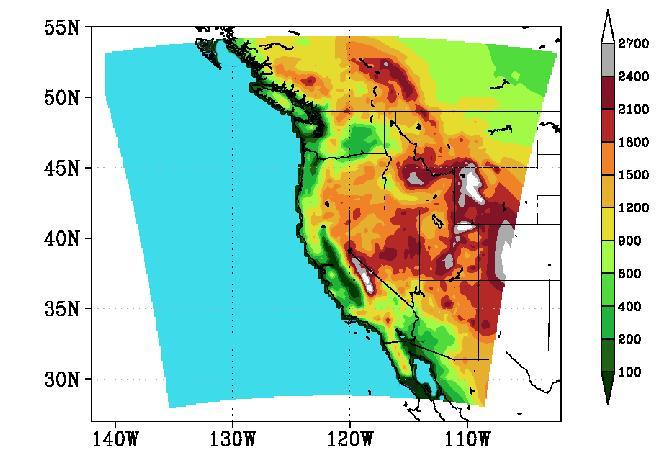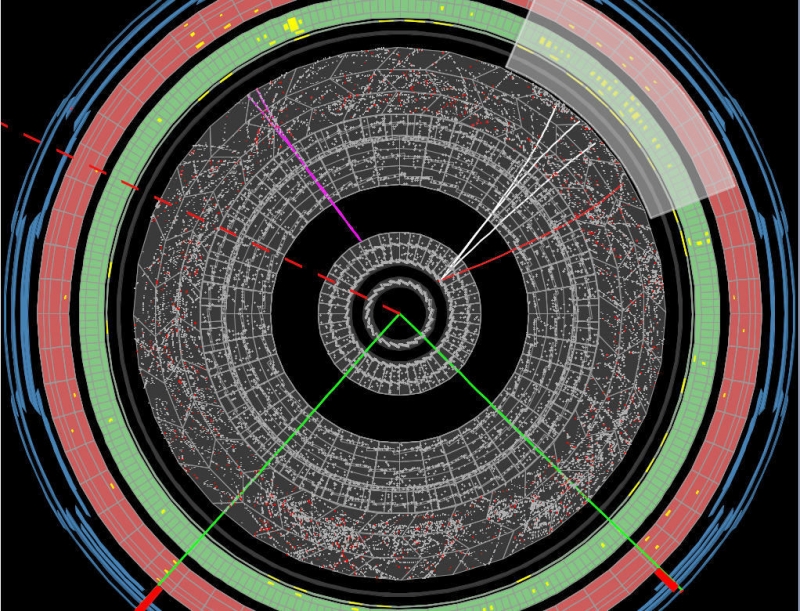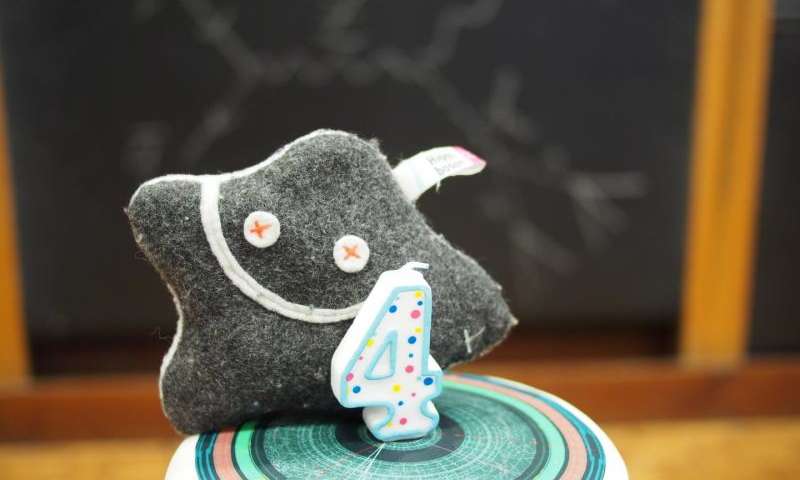It’s been a while since I’ve featured a citizen science story here. So, here’s more about Weather@Home from a June 9, 2016 Oregon State University news release on EurekAlert,
Tens of thousands of “citizen scientists” have volunteered some use of their personal computer time to help researchers create one of the most detailed, high resolution simulations of weather ever done in the Western United States.
The data, obtained through a project called Weather@Home, is an important step forward for scientifically sound, societally relevant climate science, researchers say in a an article published in the Bulletin of the American Meteorological Society. The analysis covered the years 1960-2009 and future projections of 2030-49.

Caption: The elevation of areas of the American West that were part of recent climate modeling as part of the Weather@Home Program. Credit: Graphic courtesy of Oregon State University
The news release expands on the theme,
“When you have 30,000 modern laptop computers at work, you can transcend even what a supercomputer can do,” said Philip Mote, professor and director of the Oregon Climate Change Research Institute at Oregon State University, and lead author on the study.
“With this analysis we have 140,000 one-year simulations that show all of the impacts that mountains, valleys, coasts and other aspects of terrain can have on local weather,” he said. “We can drill into local areas, ask more specific questions about management implications, and understand the physical and biological climate changes in the West in a way never before possible.”
The sheer number of simulations tends to improve accuracy and reduce the uncertainty associated with this type of computer analysis, experts say. The high resolution also makes it possible to better consider the multiple climate forces at work in the West – coastal breezes, fog, cold air in valleys, sunlight being reflected off snow – and vegetation that ranges from wet, coastal rain forests to ice-covered mountains and arid scrublands within a comparatively short distance.
Although more accurate than previous simulations, improvements are still necessary, researchers say. Weather@Home tends to be too cool in a few mountain ranges and too warm in some arid plains, such as the Snake River plain and Columbia plateau, especially in summer. While other models have similar errors, Weather@Home offers the unique capability to improve simulations by improving the physics in the model.
Ultimately, this approach will help improve future predictions of regional climate. The social awareness of these issues has “matured to the point that numerous public agencies, businesses and investors are asking detailed questions about the future impacts of climate change,” the researchers wrote in their report.
This has led to a skyrocketing demand for detailed answers to specific questions – what’s the risk of a flood in a particular area, what will be future wind speeds as wind farms are developed, how should roads and bridges be built to handle extremely intense rainfall? There will be questions about heat stress on humans, the frequency of droughts, future sea levels and the height of local storm surges.
This type of analysis, and more like it, will help answer some of those questions, researchers say.
New participants in this ongoing research are always welcome, officials said. If interested in participating, anyone can go online to “climateprediction.net” and click on “join.” They should then follow the instructions to download and install BOINC, a program that manages the tasks; create an account; and select a project. Participation in climateprediction.net is available, as well as many others.
I checked out the About page on the climateprediction.net website, which hosts the Weather@Home project,
Climateprediction.net is a volunteer computing, climate modelling project based at the University of Oxford in the Environmental Change Institute, the Oxford e-Research Centre and Atmospheric, Oceanic and Planetary Physics.
We have a team of 13 climate scientists, computing experts and graduate students working on this project, as well as our partners and collaborators working at other universities, research and non-profit organisations around the world.
What we do
We run climate modelling experiments using the home computers of thousands of volunteers. This allows us to answer important and difficult questions about how climate change is affecting our world now and how it will affect our world in the future.
Climateprediction.net is a not-for-profit project.
Why we need your help
We run hundreds of thousands of state-of-the-art climate models, each very slightly different from the others, but still plausibly representing the real world.
This technique, known as ensemble modelling, requires an enormous amount of computing power.
Climate models are large and resource-intensive to run and it is not possible to run the large number of models we need on supercomputers.
Our solution is to appeal to volunteer computing, which combines the power of thousands of ordinary computers, each of which tackles one small part of the larger modelling task.
By using your computers, we can improve our understanding of, and confidence in, climate change predictions more than would ever be possible using the supercomputers currently available to scientists.
Please join our project and help us model the climate.
Our Experiments
When climateprediction.net first started, we were running very large, global models to answer questions about how climate change will pan out in the 21st century.
In addition, we are now running a number of smaller, regional experiments, under the umbrella of weather@home.
BOINC
Climateprediction.net uses a volunteer computing platform called BOINC (The Berkeley Open Infrastructure for Network Computing).
BOINC was originally developed to support SETI@home, which uses people’s home computers to analyse radio signals, searching for signs of extra-terrestrial intelligence.
BOINC is now used on over 70 projects covering a wide range of scientific areas, including mathematics, medicine, molecular biology, climatology, environmental science, and astrophysics.
Getting back to Oregon State University and its regional project research, here’s a link to and a citation for the paper,
Superensemble Regional Climate Modeling for the Western United States by Philip W. Mote, Myles R. Allen, Richard G. Jones, Sihan Li, Roberto Mera, David E. Rupp, Ahmed Salahuddin, and Dean Vickers. Bulletin of the American Meteorological Society February 2016, Vol. 97, No. 2 DOI: http://dx.doi.org/10.1175/BAMS-D-14-00090.1 Published online 14 March 2016
This is an open access paper.


